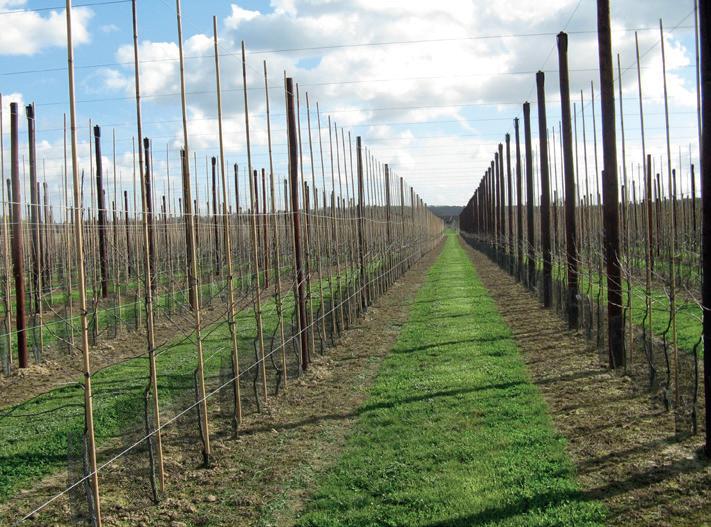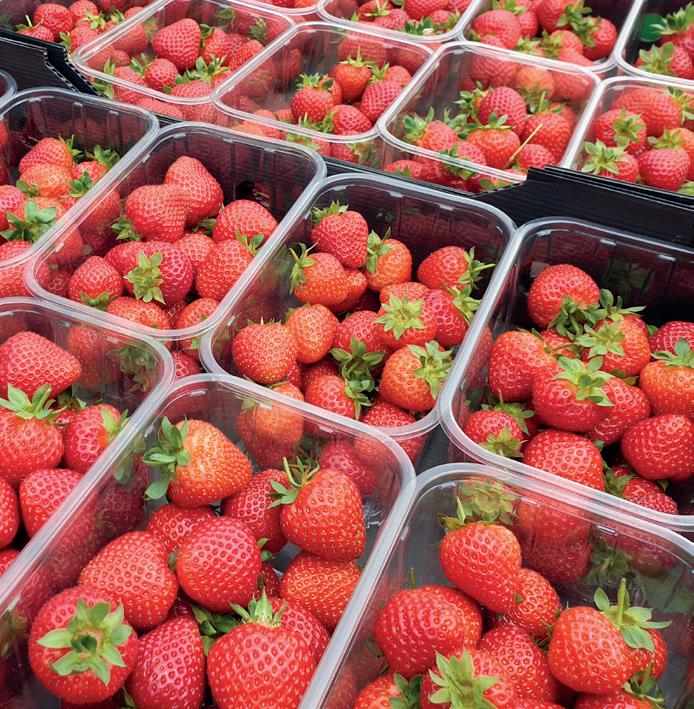
2 minute read
Increasing the number of pollinators across the North Sea Region
Title: BEESPOKE
Funder: European Regional Development Fund
Advertisement
Industry partners: Policy makers, research institutes and agronomists from seven different north sea region countries including UK, Belgium, Netherlands, Germany, Denmark, Norway and Sweden
Term: April 2019 to March 2023
Insect pollination is worth €15 billion annually across Europe and it can affect crop yield, quality and farm incomes. It is therefore important to conserve insect pollinators and identify their value. Important pollinators such a bumble bees, solitary bees and hoverflies have declined in number in recent decades and although various schemes have been set up to encourage planting of wildflowers, they haven’t always been targeted at the types of bees needed by each crop.
The project
The objective of BEESPOKE has been to increase the number of pollinators and crop pollination on a local and landscape scale by providing expertise, tools and financial knowledge to support growers. To achieve this, the project has been developing a range of seed mixes for planting on farms to help reverse the decline in pollinators. These have been targeted at the types of pollinators needed by each crop type. They have been sown at demonstration centres such as NIAB’s East Malling site (Figure 1), to evaluate how effective they are by increasing not only the levels and types of pollinators visiting the strips but also whether they increase numbers in the crops, and whether this has a subsequent impact on crop yield and quality.
Results
NIAB entomologist Celine Silva has been actively assessing and recording the impact of wildflower strips at East Malling over the life of the BEESPOKE project. Her preliminary data suggested that wildflowers outside tunnels did not compete with flowering crops for visits by commercially installed bumblebees inside the tunnels. Indeed the fluorescent tracer marked bumblebees visit the crop flowers far more than the adjacent wildflowers (Figure 2). In raspberry crops, adjacent wildflowers enhanced the number of insect pollinator visits to the crop. This would dispel any concerns commercial growers might have about wildflowers competing with their crop for pollinators.
Research in apple orchards demonstrated how over three seasons, with alleyway sowings of knapweed, yarrow, oxeye daisy, bird’s foot trefoil, self-heal, red campion and red clover, tree populations of predatory spiders, hoverflies, anthocorids and lacewings increased, while numbers of codling moth decreased. Early season aphids, such as rosy apple aphid, decreased in some years but not others, while rust mite increased in one season. Celine also identified adult thrips in wildflowers and found that species and numbers fluctuated between years but the majority of thrips recorded were not species damaging to strawberry. Further work is required in soft fruit crops to understand more about this relationship.

Celine is also of the view that there will be a greater impact of natural enemies if the wildflowers are positioned within the crop rather than around the field margin. She also recorded an increased diversity of invertebrates in soils where wildflowers were sown, compared to single species mixes, potentially having a positive impact on soil health.
NIAB organised a dedicated BEESPOKE event at East Malling in October 2022 and more information can be found on the NIAB website at: https://www.niab.com/eventhub/fruit-crops. Further guidance, publications and resources are available on the BEESPOKE website at: https://northsearegion.eu/beespoke/.
Dr Nicola Harrison, Programme Director, Growing Kent & Medway









